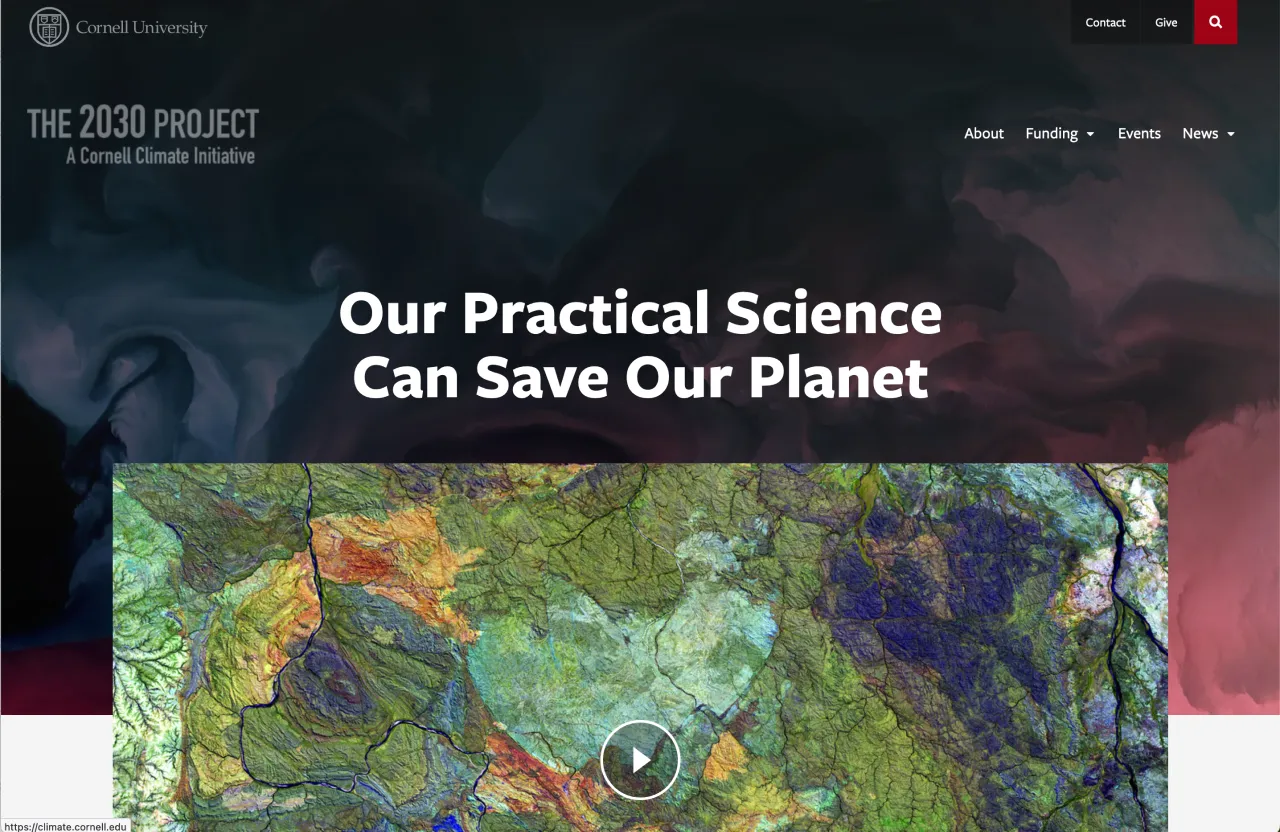
- 11ty
- Alpine.js
- Tailwind CSS
- Javascript
- Drupal
- CI/CD
The 2030 Project
As a Senior Web Designer at Cornell University, I led the development of The 2030 Project website - a critical initiative focused on climate change solutions. The project required a platform that could effectively communicate complex climate research and engage diverse audiences, from researchers to policy makers and the general public.
The Challenge
The 2030 Project needed a digital platform that could:
- Present complex climate research in an accessible way
- Facilitate collaboration between researchers across disciplines
- Engage multiple audience types with varying levels of scientific knowledge
- Maintain high performance while delivering rich content
- Meet strict accessibility requirements
The Process
The development process focused on creating a fast, accessible, and maintainable website. We chose a modern tech stack including 11ty for static site generation, Alpine.js for lightweight interactivity, and Tailwind CSS for styling. This combination allowed us to create a performant site that could be easily maintained by Cornell’s team.
Technical Implementation
The technical architecture was built with several key considerations:
- Static Site Generation: Used 11ty to generate static pages for optimal performance and security
- Progressive Enhancement: Implemented with Alpine.js for interactive features while maintaining core functionality without JavaScript
- Responsive Design: Built with Tailwind CSS using a mobile-first approach
- Accessibility: Ensured WCAG 2.1 AA compliance through semantic HTML and proper ARIA attributes
- Content Management: Integrated with Drupal for content editing while maintaining the static architecture
- Deployment: Implemented CI/CD pipeline for automated testing and deployment
Development Approach
The development process was iterative and collaborative:
- Architecture Planning: Carefully planned the site architecture to ensure scalability
- Component Development: Created reusable components for consistent design and easier maintenance
- Performance Optimization: Implemented lazy loading, image optimization, and efficient caching strategies
- Testing and QA: Conducted thorough testing across devices and browsers
- Documentation: Created comprehensive documentation for the Cornell team
Project Outcomes
The final website successfully met Cornell’s goals by:
- Providing a fast, accessible platform for climate research communication
- Creating an intuitive interface for content discovery
- Implementing a sustainable development approach that the university team could maintain
- Meeting all accessibility requirements
- Achieving excellent performance metrics
The site serves as a crucial tool in Cornell’s mission to address climate change, facilitating knowledge sharing and collaboration across the university and beyond.